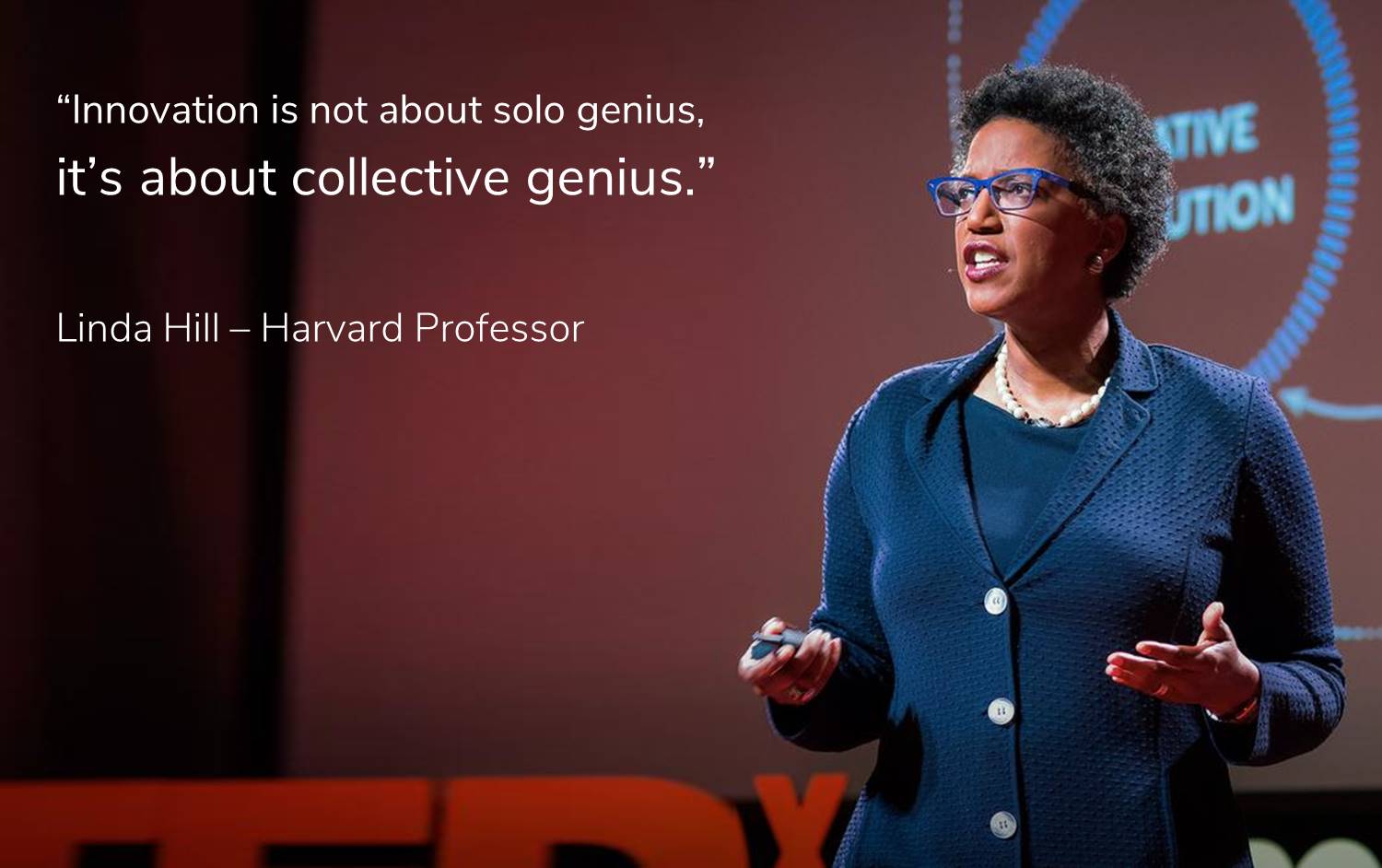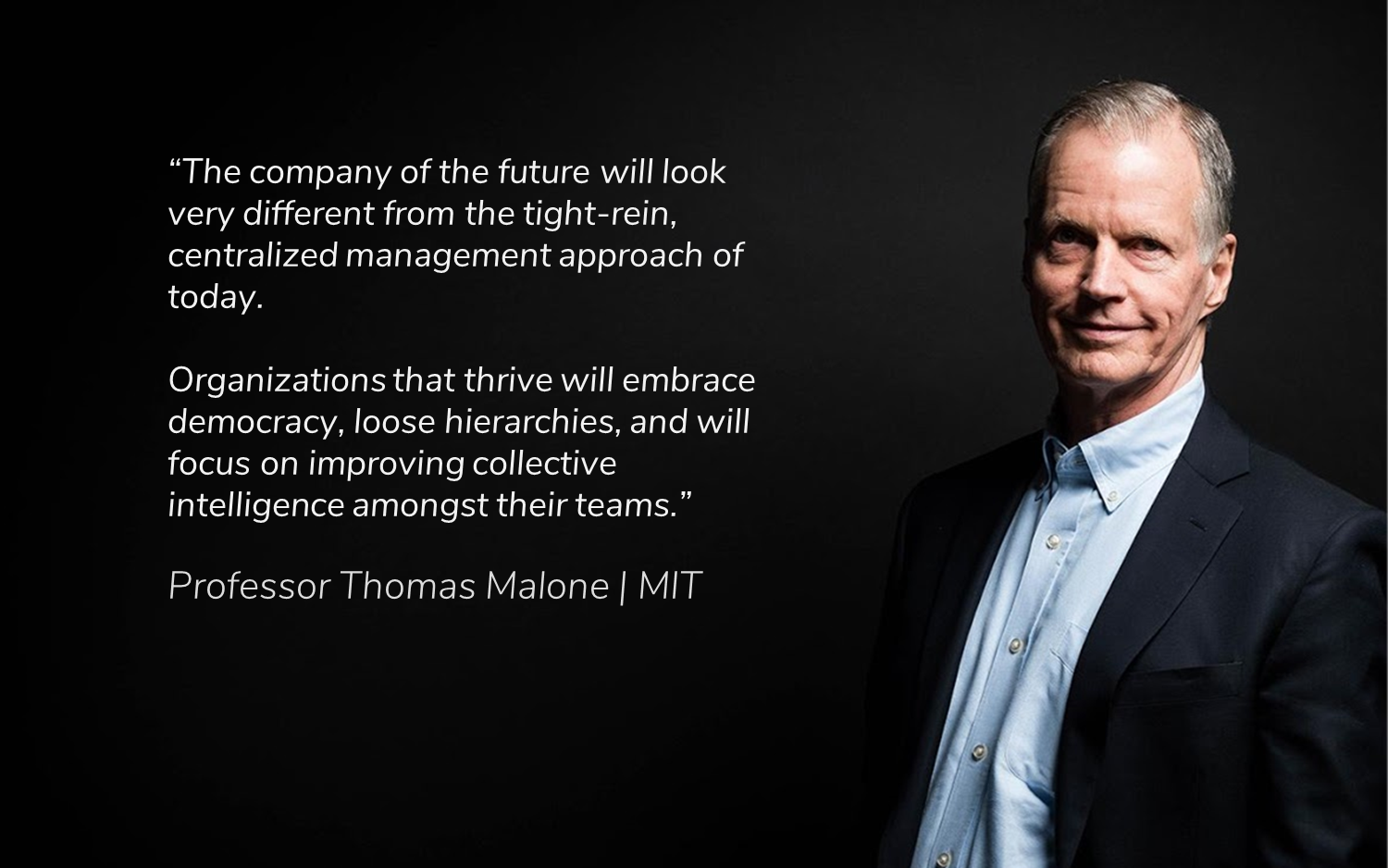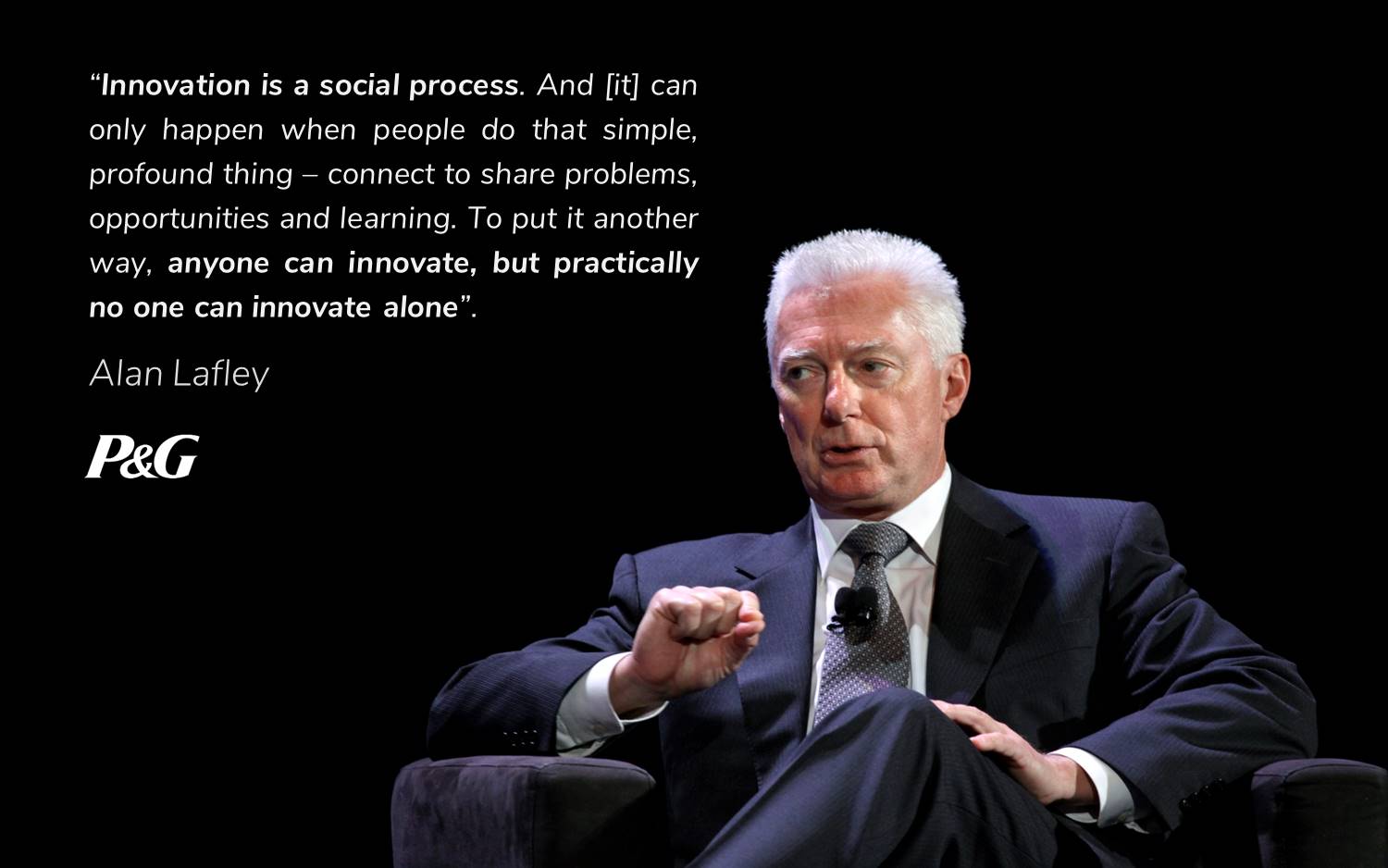83%
of multinational companies see a value in opening their innovation process to internal & external stakeholders.
Who are these stakeholders?

A number of pioneering organizations have realized that, enabling all employees to have a say in the implementation of innovative projects provides a quantum leap in trust and efficiency, compared to what a small group of decision makers could ever offer.
We help organisations navigate this journey.
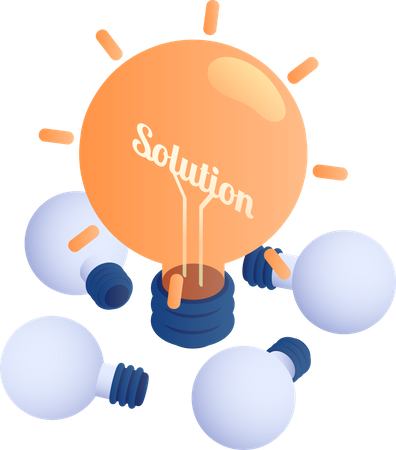
Accelerate time to market and address the hard part of innovation – the human part.
We deliver outcomes:

Innovation culture
Make innovation a recurrent activity and train your teams to spot market and customer signals and act on them.

Customer Centricity
Test critical assumptions and reduce your innovation risk. Build new business models, and design value propositions.

Intrapreneur Mindset
Lear team and individual capacities for creative high-velocity work.

Continuous Innovation
Use innovation to create change advocates, manage your innovation portfolio and retain key talent.
Our process and tools

Innovation training & Framework
- Develop a common language and toolset for your innovation processes.
- Formalize your innovation pipeline.
- Manage the implementation of ideas from signal to launch.

Strategic Advisory
- Define future scenarios, clarify priorities, and de-risk your innovation.
- Develop clear metrics and governance.
- Communication strategy, recruitment criteria, and organizational change.

Ecosystem Platform
- Engage the entire ecosystem.
- Manage, track and optimize solutions.
- Integrate training and process together.
- Streamline and reduce duplication of efforts across the organization.
Who we are?

LUMAN delivers organizational transformation and training to market leaders.
CREATIONLabs is a training program designed to produce valuable solutions while building a culture of innovation: Identify and retain innovators, Activate change catalysts, Develop innovation processes, and Create an innovation culture.
www.luman.io
connect@luman.io | +1.415.971.7371
San Francisco | London | Berlin
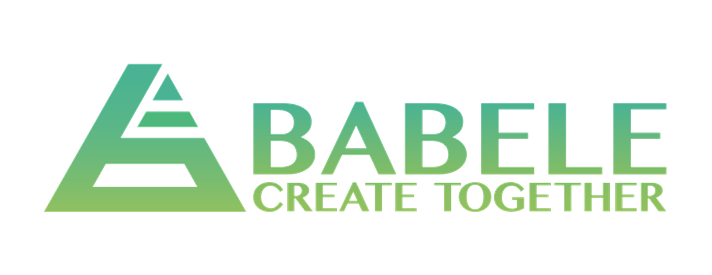
BABELE delivers collaborative innovation ecosystems for greater impact.
Babele is the online platform to manage your mission-driven innovation program & effectively engage stakeholders. It combines 10 tools into 1, so it’s possible to manage the innovation end-to-end from one centralized space.
www.babele.co
admins@babele.co | +45.93 89 30 89
Copenhagen | Bucharest
Some of the companies that trust us:

- 1000+ trained people on Innovation mindset and transformation;
- 100+ implemented innovation programs worldwide;
- 2500+ social ventures and experts gathered in the network;
- 116 countries on the accelerator software.
A program to create value for shareholders but also to become a respected leader in social progress.
The idea that global companies can take a leading role in social progress is not wrong; the question is how they can do so in a way that realistically achieves positive social impact and delivers value to their shareholders.
It begins by recognizing that there is money to be made in meeting the world’s challenges — an estimated $12 trillion in new business opportunities from advancing the United Nations’ Sustainable Development Goals.
And there is money to be lost from not tackling them because societal failures and climate change can suppress corporate growth and profitability.
Companies that are winning the sustainability battle have created the conditions to incubate sustainability initiatives while engaging employees and key stakeholders in the process.
Different types of organization require different intrapreneurship programs

Devitalized Organizations
Main Problem
Degraded climate (e.g. due to mergers & acquisitions), low motivation and commitment, absence of initiatives.
Purpose of the program
Improve motivation and the commitment of the whole staff, stimulate initiatives.
Programs’ critical aspects
Accessibility, visibility, simplicity, proven success.

Rigid Organizations
Main Problem
The processes and circuits in place do not allow to enter the opportunities because of their slowness and their complexity.
Purpose of the program
Reduce time to market, improve responsiveness and competitiveness.
Programs’ critical aspects
Must provide autonomy and “protection” to intrapreneurs while maintaining links with stakeholders.

Inventive Organizations
Main Problem
The company has significant assets under-exploited (inventions, patents, know-how, expertise).
Purpose of the program
Improve the return on assets, generate new sources income.
Programs’ critical aspects
Project and intrapreneurs identification mechanism; project selection criteria and governance.

Disrupted Organizations
Main Problem
The company faces major transformation of its competitive, regulatory or technological environment.
Purpose of the program
Transform the vision and culture of the company: understanding the novelty, experiment, innovate, collaborate.
Programs’ critical aspects
Must provide autonomy, clear benchmarks, and foster links with relevant ecosystems.

Proliferating Organizations
Main Problem
The company has proprietary technology, which can be declined in a multitude of products and applications.
Purpose of the program
Accelerate and intensify
new development products / services; accelerate organic growth.
Programs’ critical aspects
The intrapreneurial approach must become
Standard. All aspects of the organization must be re-designed consequently.
Download our insight on Intrapreneurship!
We're committed to your privacy. Babele uses the information

